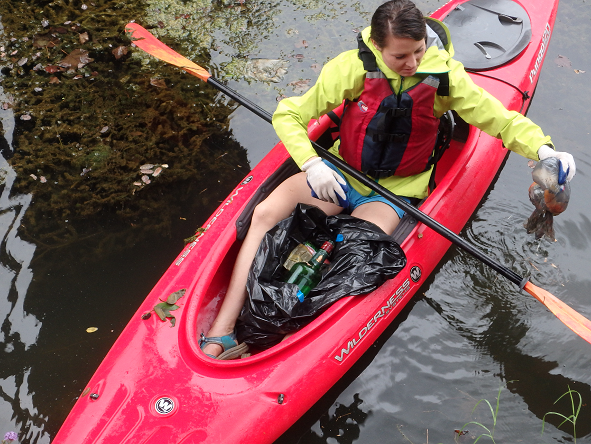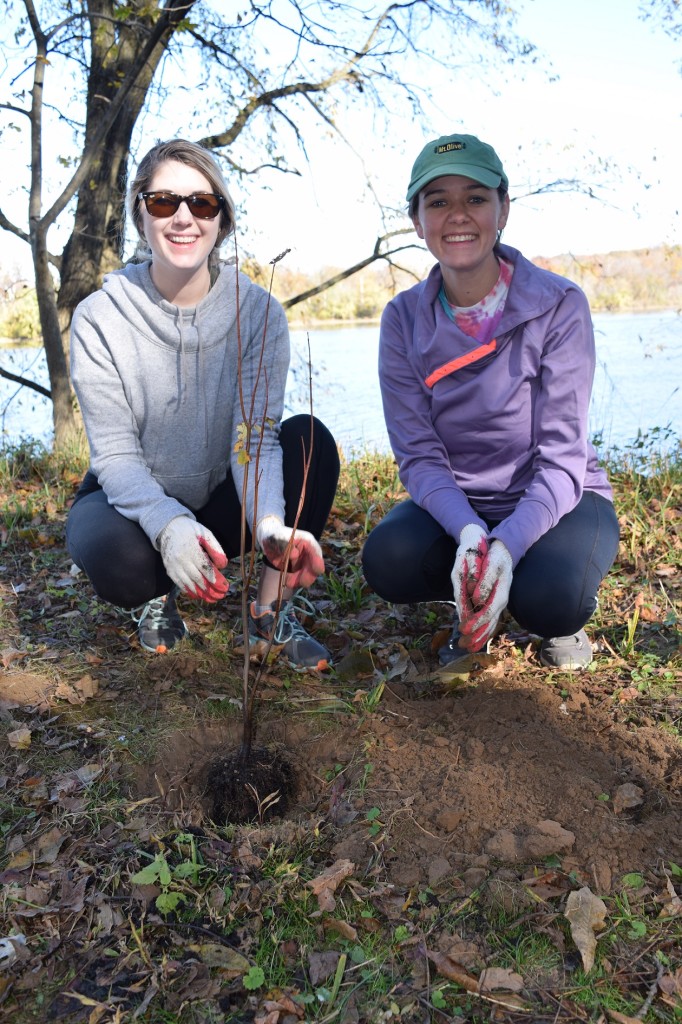
The 9.6 million acres of the Potomac watershed are home to vast forests and diverse wildlife, wild and scenic rivers, extensive recreation opportunities, places of national historic significance, vital rural farming communities, and vibrant cities.
Encompassing 14,670 square miles over four states and our Nation’s Capital, the Potomac Basin is home to 6.1 million people. The Potomac’s waters sustain wildlife, agriculture, and industry. Most importantly for our community’s health and sustainability, the Potomac River is the source of drinking water for nearly 5 million residents. Our personal health, our communities and our economy all rely on clean water.

Of all the major sources of pollution in the river, pollution flowing from factories and sewage treatment plants is now largely under control. The only major source of pollution that is increasing is polluted storm water runoff from streets, over-fertilized lawns and parking lots. Each time it rains (or snows), that water rushes over the land, picking up dirt, oil, trash, pet waste, and toxic chemicals.

In an unaltered landscape, this water is re-absorbed into the ground and filtered by trees and plants. But when rainwater falls on roofs, driveways, or other hard surfaces, it isn’t absorbed. It flows into the nearest creek or storm drain, carrying pollution with it.
The majority of polluted runoff goes directly into our local streams. As development around the region increases (throughout the Chesapeake Bay region, we lose 100 acres of forests per day), there are fewer trees to absorb pollution and more paved surfaces that prevent polluted water from filtering naturally through the ground.
The excess nutrients that flow into our waters can cause algae blooms, which deplete oxygen levels in the water, damaging the river’s vegetation and wildlife.

The underwater vegetation serves to filter pollutants out of our water and provides food and habitat for wildlife and once gone is difficult to bring back. Trash, especially plastics, has a very negative impact on water quality. Plastic releases toxic chemicals into the water that have been linked to inter-sexed fish (fish that have both male and female characteristics), which can lead to population decline. Additionally, plastic does not disappear, rather it breaks down into smaller pieces called microplastics.
According to the National Oceanic and Atmospheric Association, plastic and microplastic make up the most prevalent type of marine debris found in our oceans. Because the Potomac River flows into the Chesapeake Bay and then into our oceans, what we do to protect the river and improve water quality will have a global impact.
 The good news is that things are moving in the right direction. Pollution levels in the Potomac River are the lowest they have been in decades. But, the challenges of storm water-bourne pollution continues to grow. We have a long way to go before children can safely swim in our streams, fishermen can eat their catch, and you can drink water out of your tap without a filter.
The good news is that things are moving in the right direction. Pollution levels in the Potomac River are the lowest they have been in decades. But, the challenges of storm water-bourne pollution continues to grow. We have a long way to go before children can safely swim in our streams, fishermen can eat their catch, and you can drink water out of your tap without a filter.
Restoring a river is a complex scientific process, which, in the Potomac’s case, is made more complex by the diversity of the Potomac region. Rural areas, suburban towns, and urban cities all face different challenges that demand unique solutions. Potomac Conservancy has those solutions and is taking a strategic, targeted approach to address these problems. We are confident that through our hard work, along with our movement of 21,000+ constituents, we will make the Potomac cleaner for generations to come.

Twenty-five years ago, a group of paddlers concerned about deteriorating conditions in the Potomac Gorge formed Potomac Conservancy. They saw unchecked development and clear cutting as having a deleterious effect on the quality of the water where they retreated for peaceful recreation. Today, the Conservancy focuses on the entire Potomac watershed. We care not just about what you see in front of the Kennedy Center, but about all the streams and rivers that flow into the Potomac. We care about having clean water to drink, and clean water in which to fish and recreate.
Restoring the river to full health is not just an environmental issue, it’s a matter of public health. We are fighting for all who rely on the Potomac for sustenance and we are driven by our movement of 21,000 activists, landowners, volunteers and donors who are fighting with us.
Our waters are only as healthy as the lands that surround them. We fight to save healthy lands in the Potomac’s headwaters by working one-on-one with private landowners to permanently protect forested, agricultural, streamside, and open space lands in the northern Shenandoah Valley of Virginia and the South Branch River Valley of West Virginia.
We empower hundreds of volunteers every year to remove trash from the river’s shores and plant trees along degraded stream banks. Trees are nature’s “Brita Filters” and as such, planting them are one of the most effective, and least costly actions to take on behalf of the river’s health.
Finally, it is local, on-the-ground action coupled with state-led protections continue to be our best chance to save the Potomac and its streams.
- We hold local leaders accountable for keeping clean water a top priority.
- We protect the Potomac by advocating for clean water policies, promoting river friendly growth, and restoring local waterways.
- We also activate local residents to speak up with us for these policies. We give them the tools and information to empower them to make a difference in their local communities.
People can reach us any time, either by directly calling the office or through our website and social media. We encourage people to sign up for our monthly e-newsletter “River Update” to find out about how they can become further involved. We direct readers to petitions or local actions they can take on behalf of the river. We also list our volunteer events as well as those of our partners.
We host many volunteer and recreation activities throughout the year at various locations in the DC-Metro area. There are several options for getting involved with us:
- Potomac Stewards Trash Cleanups: We welcome volunteers of all ages to join us in removing trash from parklands surrounding the Potomac. We provide the supplies and know-how, all you need to bring is a smile and a willingness to get your hands dirty for clean water!
- Growing Native: Every fall, we mobilize volunteers to gather acorns and other native tree seeds at select locations. After collection, we send the seeds to state nurseries to be grown into seedlings for use in conservation plantings. These seeds aid state foresters in the restoration of streamside forests throughout the region, containing polluted runoff, improving wildlife habitat, and contributing to increased watershed integrity and quality of life.
- Tree plantings: In the Fall and Spring volunteers are invited to join us in planting native trees along degraded stream banks of the Potomac’s tributaries. Trees help stabilize stream banks to prevent erosion and serve as nature’s Brita filter, filtering out pollution from water running off the land before it can enter our waterways.
- Paddle The Potomac: An Alternative Happy Hour. During the summer months, we host the Paddle the Potomac – An Alternative Happy Hour series for young professionals. Participants spend a summer’s evening paddling and networking off the shores of Georgetown. This opportunity to learn about and enjoy the Potomac River from the water has proven to be one of Potomac Conservancy’s most popular community offerings.
